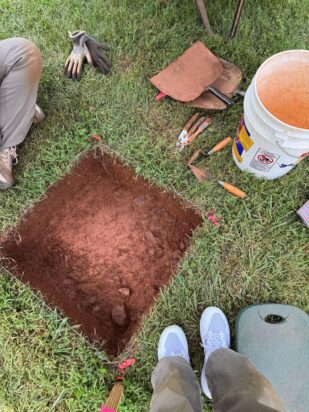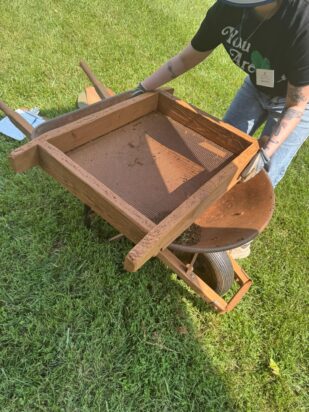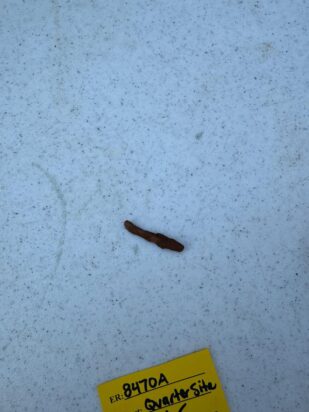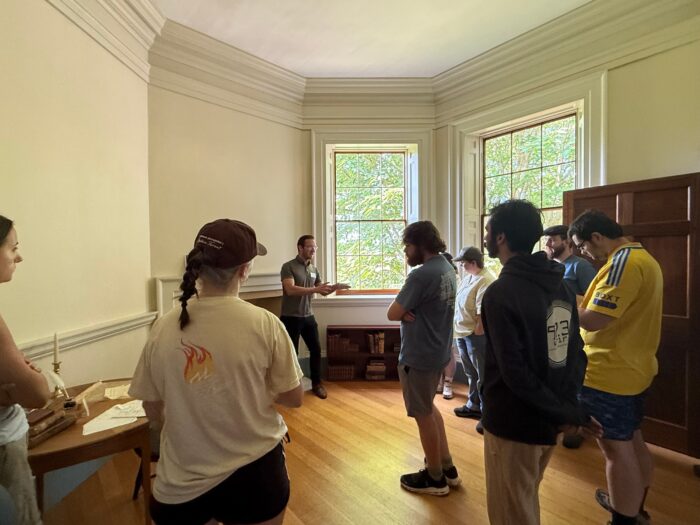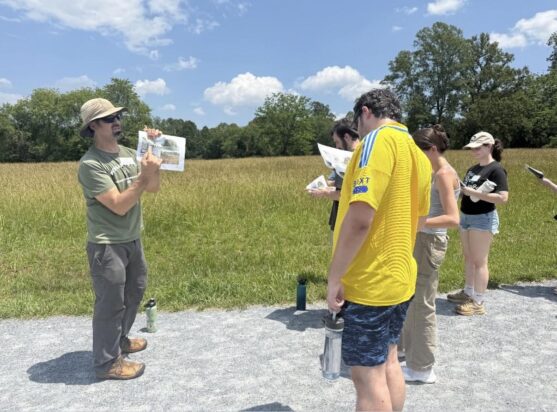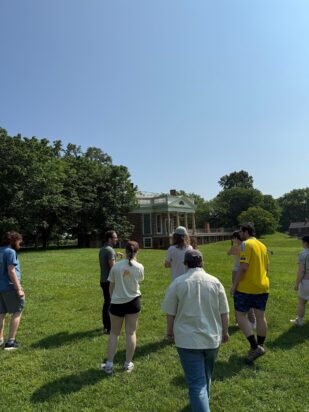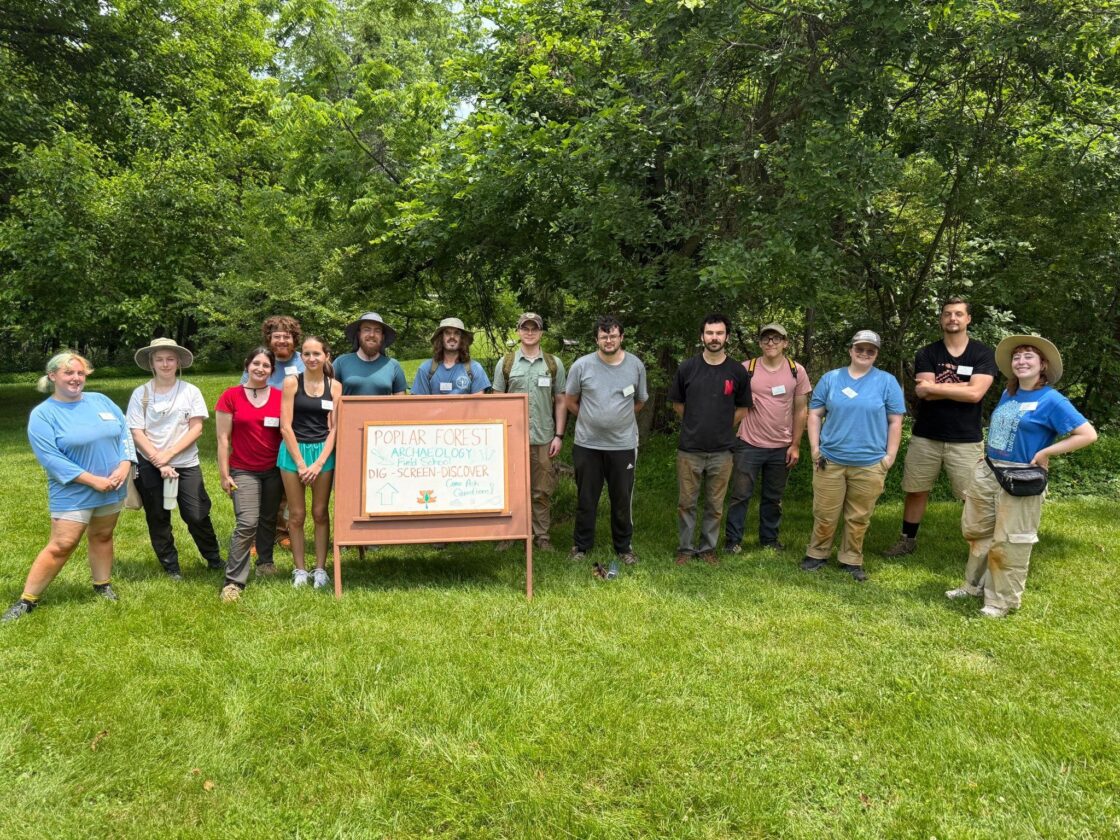Archaeology Blog
2025 Field School Week 1
By: Abby Bonner & Angie Saenz
Hey everyone! It’s Abby and Angie, checking in from Week 1 of Poplar Forest’s Archaeological Field School! This week has been a whirlwind of informative lectures, on-site fieldwork, and a fair share of mingling among our fellow students. We’d love to share some of our experiences and first impressions with you!
Upon our first arrival at Poplar Forest, we were warmly welcomed to the site by the staff with bright smiles and cheerful demeanors. We made our rounds of introductions with the other students, which have already developed into meaningful friendships with one another following collaborative efforts in our field excavations. Throughout the first week of field school and through Dr. Eric Proebsting’s lectures, we have been able to learn about the history of the plantation and the retreat home. Our first lecture laid the foundations of what Poplar Forest is, encompassing crucial information regarding the early colonial expansion that led Jefferson to Poplar Forest, the current layout of Thomas Jefferson’s 10-acre ornamental core and 61-acre curtilage, and the chronology of property ownership of Poplar Forest throughout the years. On the second day, we dove into the topic of soil concentrations, soil characteristics, and a general overview of what kinds of soils we would encounter in the following weeks. This allowed us to make use of the Munsell color system, which, in the field, significantly assisted us in identifying the layers of our unit based on the soil color and its corresponding Munsell value.
After our first few lectures, we were able to eagerly apply the techniques we learned in the classroom to the field. In pairs of two, we opened 7 2×2’ shovel test pits at the Quarter Site, dating from 1790 to 1812. We started by removing the topsoil layer of our units, then carefully excavated our units layer by layer. As we excavated, we kept notes in our field journals about weather conditions, observations, and how our findings could be applied to a better understanding of enslaved workers’ lives. At the end of the field school, these journals will become a permanent part of Poplar Forest’s archives. As we and our fellow students started to discover different features and layers in our units, we were taught how to accurately photograph our units. Keeping a careful record of our layers can provide crucial information, particularly about the time of layer deposition and how layers relate to one another (especially when artifacts and features are involved). We were also taught how to draw plans of our units, yet another way to record our work for later interpretation. During our first week, we gained many valuable techniques to excavate within the field and perform future excavations on our second site, the 1857 Slave Dwelling. Encompassing all 7 units excavated at the Quarter Site, students have found a few cut nails, glass shards, an acrylic nail, charcoal, and a piece of ceramic. There were also multiple charcoal features found in several of our units. Our unit, ER8470, contained a charcoal feature at the edge of a cobbled, rocky layer amidst the background of reddish-brown clay. We eventually plan to collect samples of this charcoal to gain additional insight into its composition, age, and hopefully interpret this data in conjunction with the Quarter Site at large.
Additionally, at the end of the week, students were led on an in-depth tour of the retreat house by Austin Englund, the Supervisor of Architectural Restoration at Poplar Forest. He not only provided details of the villa’s architectural elements, such as the use of octagonal rooms to maximize light coverage inside the residence, but he also shared interesting facts about Thomas Jefferson as a person, too. Though we had learned of the architecture and history of the retreat house in our lectures, being in the building itself bridged the gap between simply knowing about the site to seeing, with our own eyes, what we’ve learned. Following the tour, we gathered back at the lab to discuss our weekly readings, share our thoughts, and close out our first week of the Poplar Forest Field School. We’re so excited for what’s to come!

